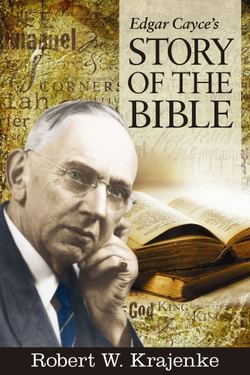Читать книгу Edgar Cayce's Story of the Bible - Robert W. Krajenke - Страница 71
На сайте Литреса книга снята с продажи.
The Birth of Moses
ОглавлениеFour-hundred-year cycles play a recurrent part in the spiritual history of Israel When the book of Exodus opens, the four-hundred-year period of captivity foretold to Abraham is nearly completed. Four centuries have passed between the death of Joseph and this soul’s rebirth as Joshua. An identical time span occurs between his last Old Testament incarnation as Jeshua, the high priest at the time of the rebuilding of Jerusalem, and his birth as Jesus.
Throughout the later history of Israel, it will be seen that the prayers of the people in times of distress or servitude have resulted in the incarnation of a great leader. Moses is the first of these figures, and the one who dominates the entire Old Testament. Many other great leaders will follow, who always arise when the people have returned to dependency on God.
The details of Moses’ birth and his being set adrift on the Nile, to be discovered by the princess, are a familiar story to all of us. However, in a reading for an Iowa housewife, who was told she had been a handmaiden to this princess, Cayce supplied additional facts. Note the touching detail about the lilies.
Before that, we find the entity was in the Egyptian land when there were those beginnings of the preparations for the coming of the lawgiver. The entity was among those of the maids to the princess of Egypt, and the individual who waded into the river to bring the little ark or bassinet ashore with the babe in same. About the babe were lilies, which is a portion of the symbol, and it is a gentle reminder of the law given by the entity [Moses] whom the servant or maid brought to this princess. These should be reminders and thus keeping the law. For the law of the Lord is perfect and it converts the soul as application is made in same through patience. The name then was Abatha.
5373-1
The orthodox interpretation has always been that the child was immediately taken into the Egyptian court and raised as an Egyptian, with the child’s mother hired as his nurse. Yet the following reading, given in 1944 for a woman from Pennsylvania, indicates the child was not raised as an Egyptian for the first several years, but in his own home, among his own people. Several members of the Egyptian household accompanied the child, and, like this maiden, were exposed to the spiritual influences in that home.
Before that, we find the entity was in the land when there were these who gathered about the ark which had been placed in the Nile. The entity was then a maid to Pharaoh’s daughter and one who was given the privilege to be in the household of Moses’ mother during the rearing of the babe who became the lawgiver to the world. For this is the basis of the activity. Thus the entity, in the name then Tanai, heard the prayers, not only of Jochabed, but Miriam, as this entity saw the child grow and knew that for which it was destined, that there were those forces, those influences such that indeed the soul of each entity is a corpuscle in the body of God.
5367-1
Another woman, a Christian service volunteer in her present life, was told she had been an instructor to Moses. The reading also suggests an exchange of ideas and information between the Egyptian teachers and the Hebrews:
Before that, the entity was in the Egyptian land, during that period when there were the preparations for those activities which brought about the return of the children of promise to the Promised Land.
The entity then was in the household of the Pharaoh, and in the name Tahi. The entity encouraged those activities and aided in the instruction of Moses as not merely an Egyptian but from the associations with Jochabed, the entity learned from the scribe Ezakiai [?] of those promises that had been made to the saints before Abraham, Isaac, and Jacob.
These became a part of the entity’s experience. And when there were the journeyings from the Egyptian land, the entity was among those who went with Moses, Aaron, and Miriam; the entity being a close associate of Miriam through those periods of journeying, and strengthened the hands of those who aided in preparing the way.
2574-1
The sympathy and understanding of many highly placed Egyptians is further evidenced in this extract:
Before that, the entity was in the earth during the period when there were those preparations for the journeying of the people of promise from the Egyptian land, in that period when the Pharaohs were in authority over that people.
The entity then was the daughter of Pharaoh, and a sister of Bithiah who nurtured and brought up Moses as her son. This daughter was not mentioned in Holy Writ, yet she wielded a power for good in those periods, even as did Bithiah.
The entity aided in changing the edicts by the influence it wielded over the overseers and the counselors to that Pharaoh; thus lightening, in a great extent, the burdens of those people.
2550-1
